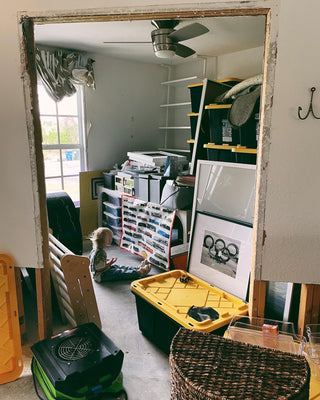After Hurricane Ian, I felt overwhelmed at where to start and how to ask for help. A saltwater flood can cause significant damage to your home and belongings, but quick action can help minimize the long-term effects.
Saltwater is especially harmful due to its corrosive nature, so it's important to know how to properly handle and salvage items after such an event. In this guide, we’ll provide 5 essential tips to help you save your belongings and prevent further damage after a saltwater flood.
1. Rinse Salt Residue Off As Soon as Possible
Saltwater leaves behind salt deposits that can cause corrosion and long-lasting damage to your belongings.
- Action: As soon as it's safe to do so, rinse all affected items thoroughly with fresh water to remove any salt residue.
- Why it’s important: Salt can deteriorate metal, wood, fabrics, and electronics quickly if left to dry. The faster you remove it, the better your chances of salvaging your belongings.
2. Dry Items Quickly and Completely
After rinsing off the salt, the next priority is to ensure that everything dries thoroughly to prevent further damage and mold growth.
- Action: Use fans, dehumidifiers, and good ventilation to speed up the drying process. Avoid heat sources like hairdryers, as they can warp or damage delicate items.
- Why it’s important: Excess moisture encourages mold and mildew, which can ruin items beyond repair. Quickly drying everything reduces this risk.
3. Clean and Disinfect Everything
Floodwaters, especially saltwater, can carry bacteria and other harmful contaminants. Proper cleaning is crucial for health and preservation.
- Action: Wipe down hard surfaces with a disinfectant solution (such as bleach) and clean fabrics with mild detergent and disinfectant.
- Why it’s important: Disinfection prevents the growth of mold, mildew, and harmful bacteria, making your belongings safe to use again.
4. Handle Electronics with Caution
Saltwater and electronics don’t mix. Handling water-damaged electronics improperly can cause irreparable harm.
- Action: Immediately disconnect any electronics from their power sources and remove batteries. Don’t try to turn them on before they’ve been inspected by a professional.
- Why it’s important: Saltwater can corrode internal components. By waiting for proper assessment and drying, you may be able to save your electronics.
5. Prioritize Salvaging Photos, Documents, and Sentimental Items
Paper items like photos, important documents, and books can often be saved if handled properly after a saltwater flood.
- Action: Gently rinse items with fresh water and let them air dry. If drying them immediately isn’t possible, freeze them to prevent further damage.
- Why it’s important: Sentimental items may hold irreplaceable value. Freezing buys time until professional restoration can be done without risking further degradation.
Final Thoughts
A saltwater flood can feel overwhelming, but quick, strategic actions can significantly reduce the damage to your belongings. By rinsing away salt, drying items thoroughly, and cleaning carefully, you can salvage many of your possessions. Electronics and sentimental items require special attention but can often be saved with the right steps.
If you're facing the aftermath of a saltwater flood, follow these five steps to restore as much as possible and protect your items from further harm.





